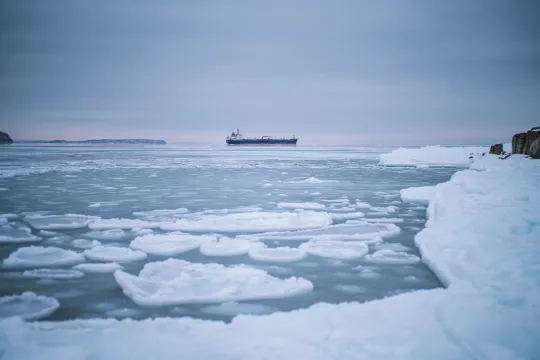Active banners: 0 Visible banners: 0
CFR Education: Why Scientists Are Watching Greenland
Provided by: Council on Foreign Relations |Published on: September 11, 2023
Lesson Plans
9101112AP
Synopsis
- This section explains the effect that climate change is having on glacier melt in Greenland and how that is affecting sea level rise.
- Students will read about feedback loops, study graphs and interactive maps, see a before and after image of one area in Greenland, and watch a time lapse of ice mass loss in order to facilitate learning.
- This is the third section of the World 101 Climate Change module and includes a linked lesson plan for grades 9-12 and discussion guide for higher education classes.

Subjects: Earth and Space Sciences, Geography
Authors: CFR Education
Region: North America, Polar Regions, Global
Languages: English
Teaching Materials
Positives
- Clicking on underlined vocabulary words will allow students to see the term defined, without taking them away from the reading screen.
- The interactive media and maps in this article make it both highly informative and engaging for students.
Additional Prerequisites
- The lesson plan and discussion guide provided have a few items for this specific lesson, but are written to connect to multiple sections.
- Students should understand what climate change is, how humans are contributing to climate change, and the basic effects of climate change on life as we know it.
- Students may need "feedback loops" explained in greater detail prior to starting the lesson.
Differentiation
- Students can research flooding events and/or other weather events that have led to the displacement of people and communities, then discuss how these events may unequally affect low income individuals, people of color, Indigenous peoples, and those of low socio-economic status.
- Students in geography classes can create their own detailed map of a particular region to show what coastal areas will look like if sea levels continue to rise, based on the interactive map included.
- Students can write a public service announcement to warn and inform people about sea level rise.
- Students with low reading stamina can be put in small groups, with each group member reading a section from the article and sharing the most important ideas.
- Science and health classes can discuss the effects of coastal flooding on freshwater resources, which can be contaminated by seawater when flooding events occur.
Scientist Notes
Teaching Tips
Standards
Resource Type and Format
About the Partner Provider

CFR Education from the Council on Foreign Relations
CFR Education provides accurate, accessible, authoritative resources that build the knowledge, skills, and perspective high school and higher education students need to understand and engage with today’s most pressing global issues.
All resources can be used for your educational purposes with proper attribution to the content provider.



